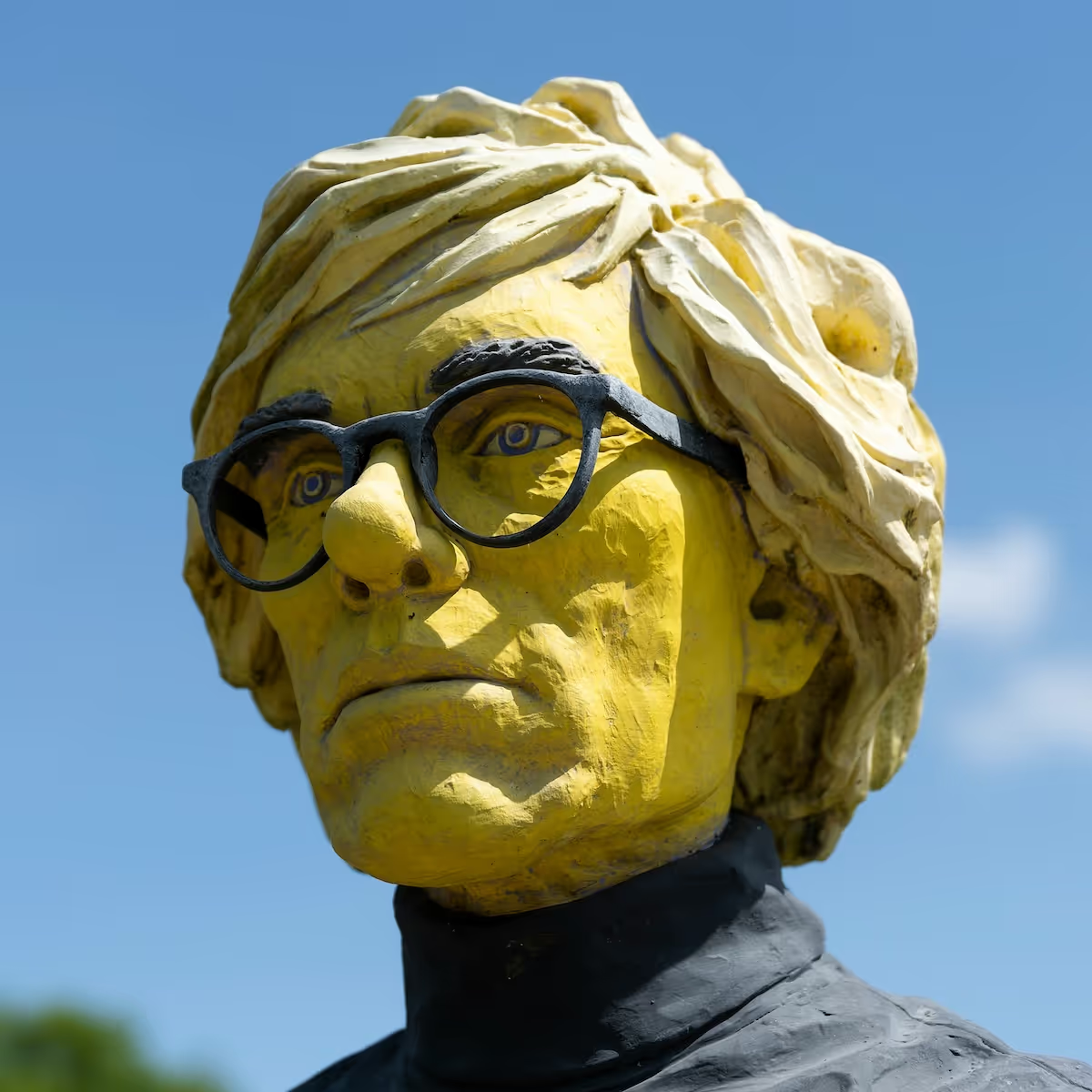Andy Warhol: Who was the “Picasso of Pop Art”?

In the history of art, there was only one exceptional talent who created iconic works from soup cans or bananas: Andy Warhol. The US artist, also known as Picasso of Pop Art, has revolutionized the art world since the 1950s with his screen prints, which often show colorful series of celebrities or everyday objects. Immerse yourself in the life and work of one of the most famous and discussed artists of the 20th century.
A dazzling, short (life) work
Andy Warhol, whose real name Andrew Warhola is barely known, was probably the most important representative of pop art. He was born in 1928 in Pittsburgh as the youngest son of a poor immigrant family from present-day Slovakia. As a child, he suffered from various illnesses, including a pigmentation disorder that made him appear like an albino. Young Andrew also suffered another stroke of fate: His father, a construction worker, died in an accident when he was 13 years old. All this prevented him from making friends of the same age, but favored his artistic development. During the long periods that he had to spend in bed again and again, he developed an interest in art, comics and films and showed a remarkable talent for drawing and painting from an early age.
He therefore decided to study as a graphic designer at the Carnegie Institute of Technology in Pittsburgh. In 1949 he settled in New York. Warhol initially worked as an advertising artist for fashion magazines and designed Christmas cards, LP covers and weather maps for television. With success: the young artist became one of the most successful illustrators in New York. As a result of his work, Warhol also recognized the power of everyday culture, consumption and mass media — topics that would accompany him throughout his artistic life.
This is how he came up with the idea of placing celebrities, comic characters and objects of everyday life at the center of his pictorial motifs. His graphic talent enabled Warhol to skilfully combine stylistic elements of illustration and painting, which have become more and more popular in the art world over the years. As early as 1956, the graphic designer was exhibiting at the Museum of Modern Arts, developed the “drop and dripping” technique in subsequent years, then pioneering screen printing and was one of the highest-paid graphic designers in New York at the end of the 1950s.
In the 1960s, Andy Warhol began painting everyday mass-produced products such as Campbell soup cans and Coca-Cola bottles. The essence of Warhol's art was the abolition of the difference between “fine arts” and commercial utility art. He summed up his philosophy with the distinctive sentence:”When you think about it, department stores are also a kind of museum.”
In 1962 Andy Warhol founded the first of his legendary studios called “Factory” — a studio that quickly became a meeting place for artists, musicians and avant-gardists. Stars such as Mick Jagger, Jim Morrison and Bob Dylan, Salvador Dalí and Marcel Duchamp, among others, came in and out there. Together with friends and employees, Andy Warhol produces large-format screen prints in the factory and produces curious to grotesque films.
In 1968, Warhol was shot by feminist Valerie Solanas. Critically injured, he barely survived. Her motive is still not entirely clear — but it is likely that it was primarily private reasons that prompted her to commit this act. For example, the disappointment that the influential artist had not campaigned for a Solanes play. The assassination fundamentally changed Warhol's life. Although the prices for his paintings rose thanks to media attention, the artist was physically weakened and worked more withdrawn from then on.
Warhol died in 1987 at the age of only 58 as a result of gallbladder surgery. He left behind an incredibly complex and influential body of work. Pictures such as Campbell's Soup Cans, Marilyn Monroe and Brillo Boxes made Warhol a superstar — and a provocateur who dissolved the boundaries between art, commerce and cult.
Warhol's style: color fireworks in series
The artist once described his worldview, which his work reflects, with the words: “I am extremely passive. I accept things as they are. I'm just watching, I'm watching the world.” For example, he saw high and pop culture and advertising as equally important in his work and worked with the power of repetition: “I love doing the same thing over and over again. ”
Warhol therefore often placed his objects in series next to each other, taking advantage of the advantages of screen printing. As motifs, Pop Art Picasso used advertisements and newspaper pages, but also templates from classical art. This is how the b came about, for exampleIllustrated pictures with 32 soup cans.
By sequencing depictions of people, he also created works with 20th century icons such as Marilyn Monroe, Liz Taylor, Brigitte Bardot and Elvis Presley. In doing so, Warhol also revealed the dark side of the entertainment industry: the marketing of stars and their position as an economic product.
One of the most famous motifs is and will probably remain Marilyn Monroe. Shortly after her death in 1962, Warhol created a series of portraits that stylized her as a modern icon. The Shot Marilyn's — four works from 1964 — were damaged by a notorious performance by performance artist Dorothy Podber, who pulled a pistol in Warhol's studio and shot at the pictures. The works, named after their background color (Shot Red, Shot Orange, Shot Light Blue and Shot Sage Blue Marilyn) are today among the most valuable works of art in the world. Shot Sage Blue Marilyn sold for 195 million US dollars in 2022, making it the second-most expensive work of art in the world.
The “Toy Series”: Art meets childhood
Less known but particularly appreciated by collectors is Warhol's “Toy Series.” It was created in the 1980s on behalf of Galerie Bruno Bischofberger in Zurich and was originally planned for a children's book project. Since Warhol had a fascination for toys anyway, which were also often the motifs of his advertising graphics from the 1950s, he was impressed by the project. The result was a series of locomotives, dogs, pandas and monkeys that are playful and colorful, but by no means banal.
The work “Monkey” from 1983 (soon on FINEXITY!) is one of the most popular motifs from the Toy Series: It shows a stylized, cheerful grinning monkey in bright colors.
Investors and collectors appreciate the work for its visual impact and rarity: “Monkey” comes from a limited series of 150 copies, signed and numbered by Warhol himself. The combination of Warhol's signature style, charming theme and market demand makes “Monkey” a attractive investment in any diversified art portfolio.



